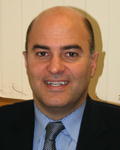
Emile A. Bacha
Columbia University Medical Center, USA
Title: Individualized approach in the management of patients with hypoplastic left heart syndrome (HLHS)
Biography
Biography: Emile A. Bacha
Abstract
Over the past decade, new variations on the "classic" first stage palliation (the Norwood/BT shunt) for patients with Hypoplastic Left Heart Syndrome have emerged and been vetted by the medical community. A "one size fits all" approach may not be adequate anymore. In this review, the optimal indications for the various palliative options (Norwood/BT shunt, Norwood/RV-PA conduit, Hybrid Stage I with or without ductal stenting, heart transplantation) are reviewed from a standpoint of the initial anatomy and physiology of the patient, letting it guide clinical management. Current knowledge useful for decision-making is also reviewed as objectively as possible.
Hypoplastic left heart syndrome (HLHS) remains one of the most common and lethal congenital heart anomalies, as reflected by the dismal 65% 5-year survival rate seen in the only prospective randomized study ever done in this field, the Single Ventricle Reconstruction (SVR) trial. In addition, the last 10 years have seen the emergence of alternative therapies for neonates afflicted with HLHS. The choice used to be palliative care vs Norwood Stage I with a modified Blalock-Taussig shunt (MBTS) vs heart transplantation. Today, the palliative care option has receded, but not disappeared, from the menu. Heart transplantation has become a rare back-up option for “failed†Norwoods or Fontans.
Reconstructive options include the Norwood/BTS, Norwood with a Right Ventricle to Pulmonary Artery shunt (RVPAS), and the so-called hybrid approaches Fifteen years ago, the vast majority of Norwoods were done at 18C under deep hypothermic circulatory arrest . A myriad of different circulatory support approaches at various temperatures have been described since, including the now popular selective cerebral perfusion through a shunt sutured to the innominate artery, though no agreement exists with regards to flow, temperature or impact on the central nervous system With respect to factors impacting outcomes, much more knowledge has been accumulated. We now know that neurodevelopmental problems are likely to be integral to children with HLHS and not necessarily (though can be) a consequence of surgical trauma.
